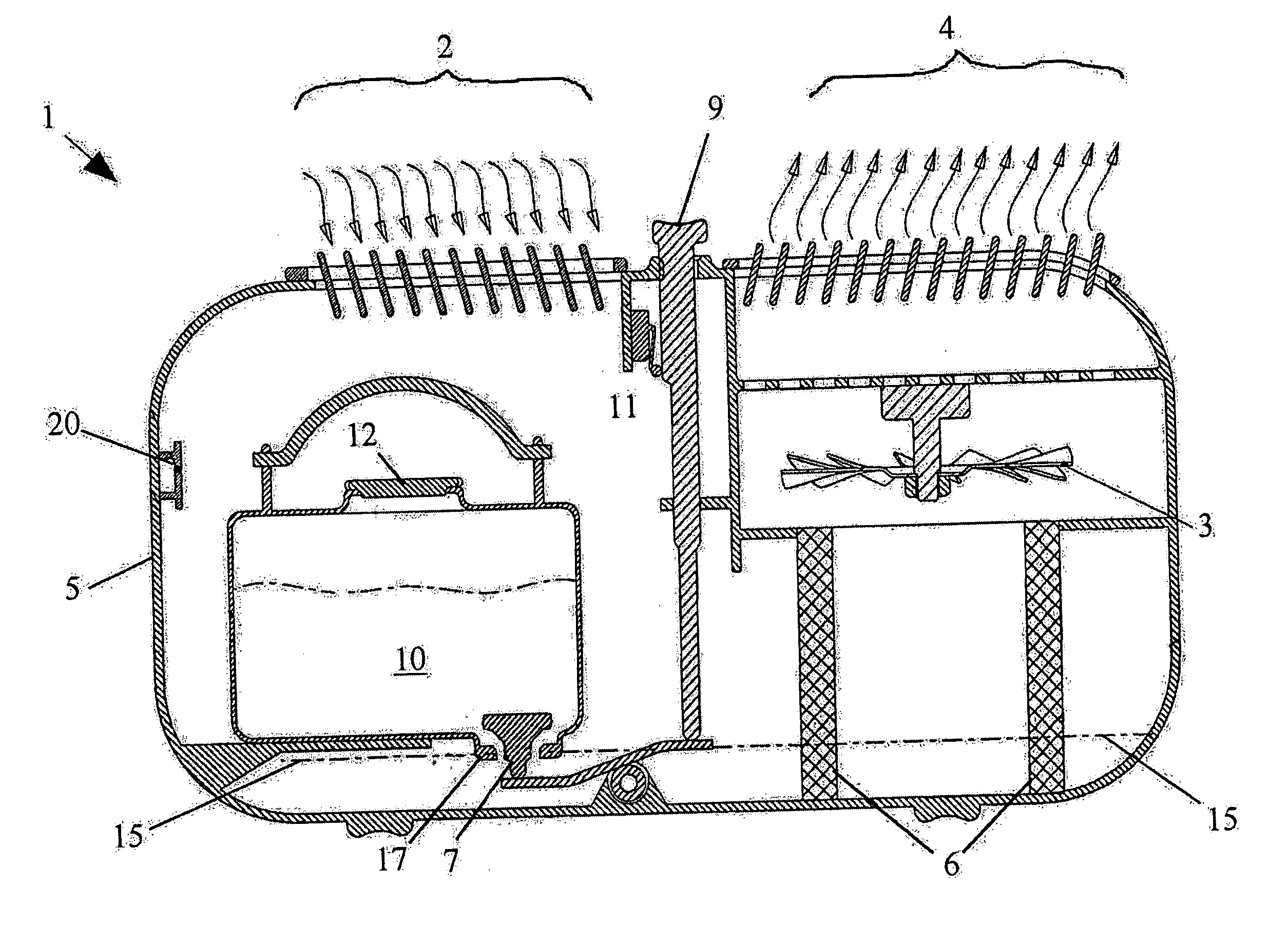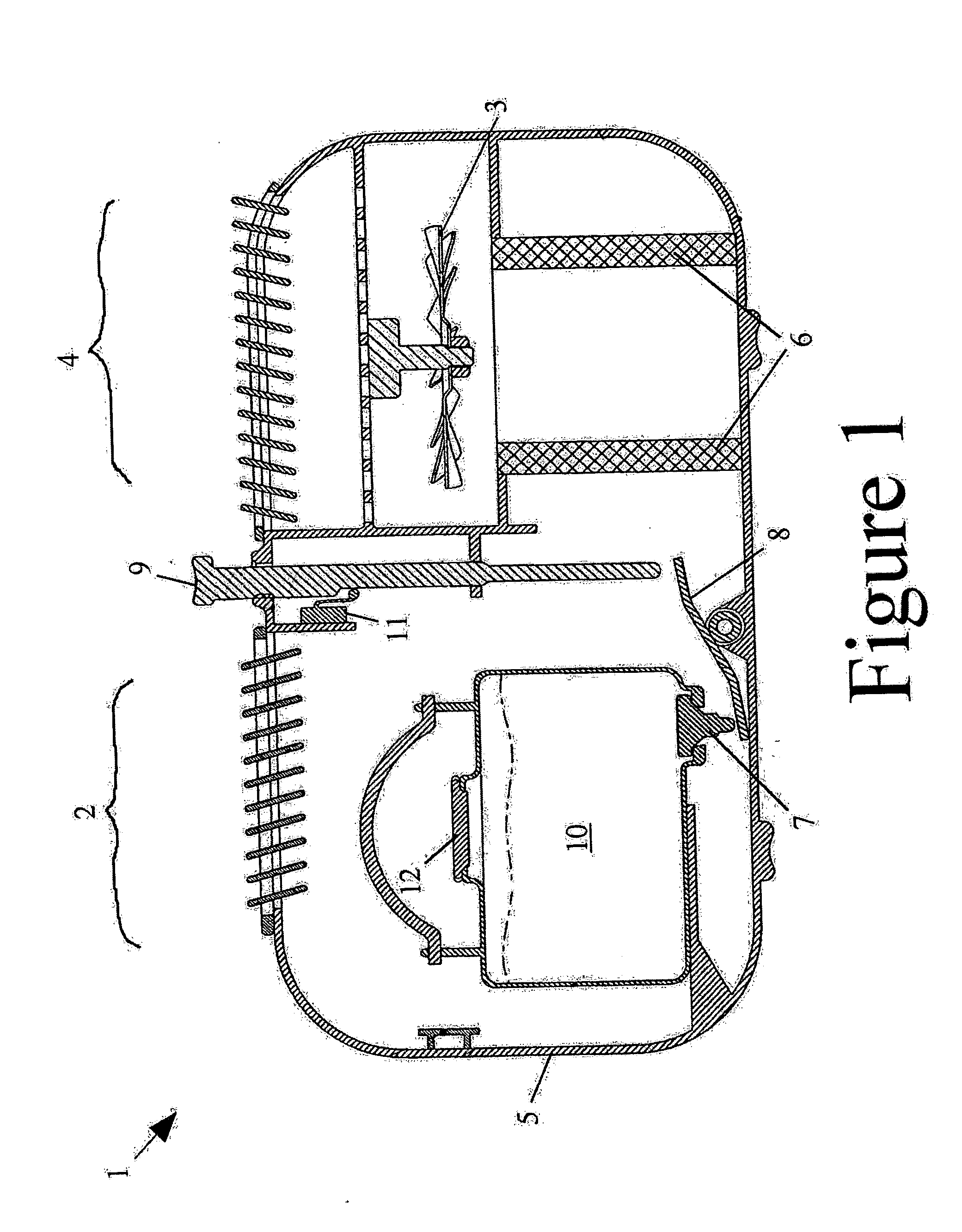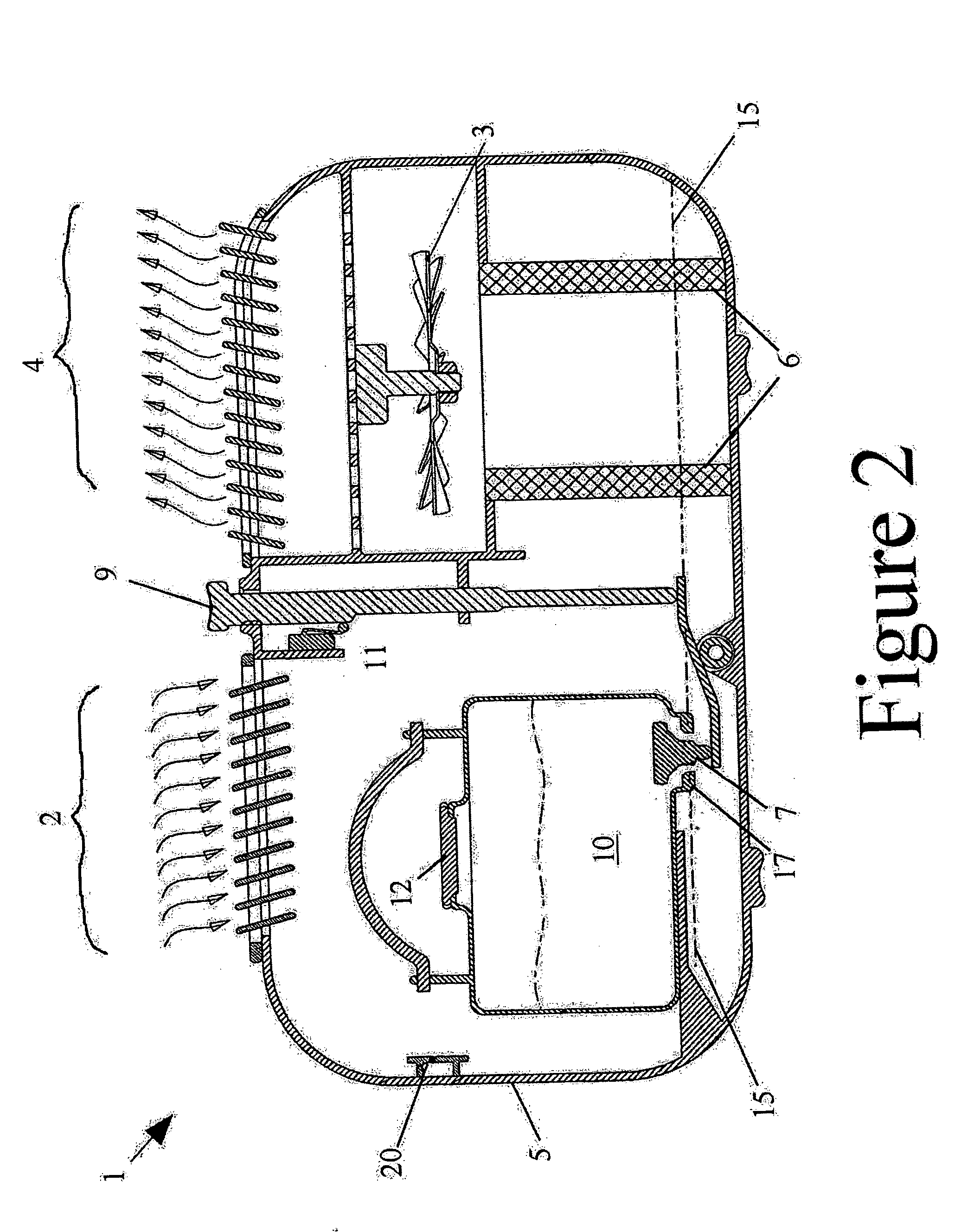Microorganism-resistant humidifier
a technology of humidifier and microorganisms, which is applied in the field of humidifiers, can solve the problems of microorganism growth, insufficient humidity, and insufficient humidity of humidifiers, and achieve the effect of inhibiting the growth of microorganisms
- Summary
- Abstract
- Description
- Claims
- Application Information
AI Technical Summary
Benefits of technology
Problems solved by technology
Method used
Image
Examples
Embodiment Construction
[0016] Referring to FIG. 1, there is shown an embodiment of the humidifier 1 of the disclosure having a microorganism-vulnerable reservoir 5 and a microorganism-resistant reservoir 10. In the embodiment shown, the microorganism-resistant reservoir 10 serves as a primary or first reservoir and is preferably located inside the secondary microorganism-vulnerable reservoir 5, though this is not required.
[0017] The secondary reservoir owes its vulnerability to exposure to the ambient atmosphere via one or more intake vents 2 and exhaust vents 4. A fan or blower 3 is positioned to circulate air from the intake vents 2 through one or more wicks 6 and out the exhaust vents 4. The wick 6 is optional, though preferred because of the increased surface area it provides for more efficient evaporation of water. In the drawing, a single cylindrical wick 6 is shown, with the blower 3 positioned above it to vacuum or draw air out of the wick's interior.
[0018] The primary microorganism-resistant re...
PUM
| Property | Measurement | Unit |
|---|---|---|
| Time | aaaaa | aaaaa |
| Time | aaaaa | aaaaa |
Abstract
Description
Claims
Application Information
 Login to View More
Login to View More - R&D
- Intellectual Property
- Life Sciences
- Materials
- Tech Scout
- Unparalleled Data Quality
- Higher Quality Content
- 60% Fewer Hallucinations
Browse by: Latest US Patents, China's latest patents, Technical Efficacy Thesaurus, Application Domain, Technology Topic, Popular Technical Reports.
© 2025 PatSnap. All rights reserved.Legal|Privacy policy|Modern Slavery Act Transparency Statement|Sitemap|About US| Contact US: help@patsnap.com



